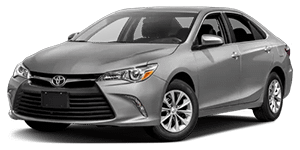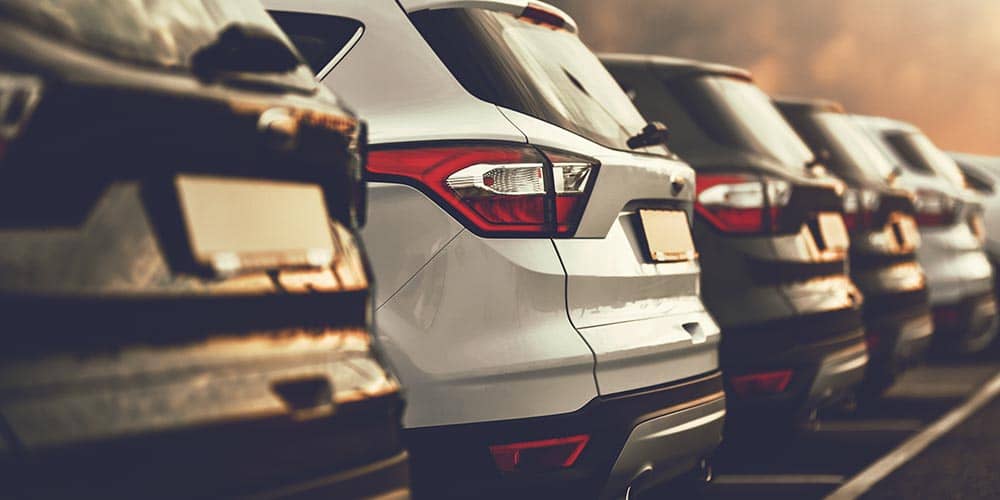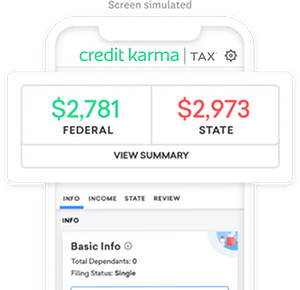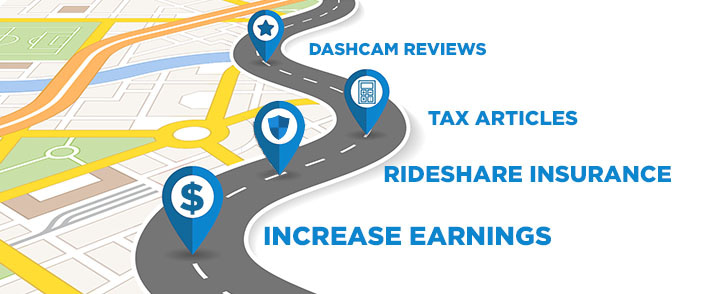This website contains affiliate links and we may be compensated for referrals.
The decision to purchase a car for your rideshare work will have a huge impact on your personal finances. There is a huge difference between a new and a used car when that vehicle is being used for business.
The type of car you purchase, and the miles that you drive are important considerations, but the biggest financial impact is depreciation expense.
What Is Depreciation?
Depreciation is the decline in value of an asset, as the asset is used over time.
Your car is an asset for your rideshare business, and the value of your car declines as your drive. New cars depreciate faster than older models.
If you’re buying a car for your rideshare business, there are a number of factors to consider.
Car Purchase Factors
- Purchase price: The sale price of the car
- Sales tax: State sales tax is based on the purchase price, which means that new car buyers pay more in sales tax.
- Loan interest: Interest costs you pay over the life of a car loan
- Trade-in value: Kelley Blue Book defines trade-in value as: “the amount of credit that a car dealer is willing to offer you toward the purchase price of a new or used car in exchange for ownership of your old car.” How much is your car worth once it’s reached its end of life?
- Repair and maintenance: Generally speaking, older cars require more maintenance than newer models. Car companies provide warranties on major component parts, such as the powertrain. If you purchase an older car, however, the vehicle may not include the same warranties as a new car purchase. Most warranties have mileage limitations, however, so rideshare drivers may expire their warranty very early.
- Insurance: Because newer cars are worth more, they are more expensive to insure as the insurance company bases the fee on the replacement cost of the vehicle.
Driving a newer car gives your rideshare passengers a better experience, but your total costs may outweigh the benefits of buying a new vehicle.
To decide for yourself, you need to do your homework. Here are 4 examples to compare.
(skip to side-by-side comparison)
New Car Purchase: Drive 60,000 miles a year
A driver purchases a 2019 Toyota Camry LE with standard equipment, and plans to drive 60,000 miles per year. Here are the details of the purchase:
- Sale price $22,624, no down payment
- 60-month term loan at a 4.5% interest rate (a rate that assumes good credit)
- 6% sales tax paid ($1,357), and $300 in registration fees

Maintenance costs
The annual maintenance cost on a 2019 Toyota Camry is $407, according to RepairPal. That assumes the typical 10k-15k/year mileage that most drivers incur. However, driving more miles increases the frequency of maintenance costs for oil changes and brake pads, among other costs. We have multiplied this number by 4 to accommodate 60k/miles per year.
Insurance costs
According to The Zebra.com, the annual insurance costs for a 2019 Toyota Camry driven 60,000 miles a year for business is $1,524 ($127 per month).
This quote assumes that the driver has a good credit rating, and has not had an accident in the past three years. This policy includes property damage, bodily injury, collision and comprehensive insurance. The deductible for collision and comprehensive are $1,000 each.
Vehicle Equity
What would the car be worth three years after purchase?
To estimate the future trade-in value, use the Kelley Blue Book value of a 2016 Camry today.
If the driver buys a car with no miles driven, and drives 180,000 miles over 3 years, the trade-in value at 180,000 miles is $5,357. The owner has a $10,371 balance on the loan, and the car’s equity is (-$5,014).
The total interest expense over the life of the loan is $2,879.
Used Car Purchase: Drive 60,000 miles a year
A driver purchases a 2016 Toyota Camry LE with standard equipment, and plans to drive 60,000 miles per year.
- Sale price $14,473, no down payment
- 36-month term loan at a 6% interest rate (a rate that assumes good credit)
- 6% sales tax paid ($885), and $300 in registration fees. In most states, all car purchases are taxed at the same rate, regardless of whether the car is new or used. Here is the State of Illinois sales tax on vehicles, as an example.

Maintenance costs
The annual maintenance cost on a 2016 Toyota Camry is $407, according to RepairPal. That assumes the typical 10k-15k/year mileage that most drivers incur. However, driving more miles increases the frequency of maintenance costs for oil changes and brake pads, among other costs. We have multiplied this number by 4 to accommodate 60k/miles per year.
Insurance costs
According to The Zebra.com, the annual insurance costs for a 2016 Toyota Camry driven 60,000 miles a year for business is $1,392 ($116 per month).
This quote assumes that the driver has a good credit rating, and has not had an accident in the past three years. This policy includes property damage, bodily injury, collision and comprehensive insurance. The deductible for collision and comprehensive are $1,000 each.
Vehicle Equity
What would the car be worth three years after purchase?
To estimate the future trade-in value, use the Kelley Blue Book value of a 2013 Camry today.
If the driver buys a car with 50,000 miles driven, and drives an additional 180,000 miles over 3 years, the trade-in value at 230,000 miles is $3,445. The owner has a $0 balance on the loan, and the car’s equity is $3,445.
The total interest expense over the life of the loan is $1,516.
New Car Purchase: Drive 13,500 miles a year
A driver purchases a 2019 Toyota Camry LE with standard equipment, and plans to drive 13,500 miles per year. According to the United States Department of Transportation Federal Highway Administration, Americans now drive an average of 13,476 miles per year, so we’ll use 13,500 as an average.
- Sale price $22,624, no down payment
- 60-month term loan at a 4.5% interest rate (a rate that assumes good credit)
- 6% sales tax paid ($1,357), and $300 in registration fees

Maintenance costs
The annual maintenance cost on a 2019 Toyota Camry is $407, according to RepairPal. That assumes the typical 10k-15k/year mileage that most drivers incur.
Insurance costs
Vehicle Equity
What would the car be worth three years after purchase?
To estimate the future trade-in value, use the Kelley Blue Book value of a 2016 Camry today.
If the driver buys a car with no miles driven, and drives 40,500 miles over 3 years, the trade-in value at 40,500 miles is $10,487. The owner has a $10,371 balance on the loan, and the car’s equity is $116.
The total interest expense over the life of the loan is $2,879.
Used Car Purchase: Drive 13,500 miles a year
A driver purchases a 2016 Toyota Camry LE with standard equipment, and plans to drive 13,500 miles per year.
- Sale price $14,473, no down payment
- 36-month term loan at a 6% interest rate (a rate that assumes good credit)
- 6% sales tax paid ($885), and $300 in registration fees.

Maintenance costs
The annual maintenance cost on a 2016 Toyota Camry is $365, according to RepairPal. That assumes the typical 10k-15k/year mileage that most drivers incur.
Insurance costs
According to The Zebra.com, the annual insurance costs for a 2016 Toyota Camry driven 13,500 miles a year is $816 ($68 per month).
This quote assumes that the driver has a good credit rating, and has not had an accident in the past three years. This policy includes property damage, bodily injury, collision and comprehensive insurance. The deductible for collision and comprehensive are $1,000 each.
Vehicle Equity
What would the car be worth three years after purchase?
To estimate the future trade-in value, use the Kelley Blue Book value of a 2013 Camry today.
If the driver buys a car with 50,000 miles driven, and drives an additional 40,500 miles over 3 years, the trade-in value at 90,500 miles is $5,719. The owner has a $0 balance on the loan, and the car’s equity is $5,719.
The total interest expense over the life of the loan is $1,516.
Comparing the Numbers: New vs Used
Here is a summary for the financial impact of each decision:
| New ’19 Camry | Used ’16 Camry | New ’19 Camry | Used ’16 Camry | |
|---|---|---|---|---|
| Miles Driven Annualy | 60,000 | 60,000 | 13,500 | 13,500 |
| Mileage at Purchase | 0 | 50,000 | 0 | 50,000 |
| Purchase Price | $22,624 | $14,473 | $22,624 | $14,473 |
| 6% Sales Tax | $1,357 | $885 | $1,357 | $885 |
| Title & Fees | $300 | $300 | $300 | $300 |
| Total Loan Amount | $24,281 | $15,928 | $24,281 | $15,928 |
| Loan Term | 60 Months | 36 Months | 60 Months | 36 Months |
| APR | 4.50% | 6% | 4.50% | 6% |
| Monthly Payment | $453 | $485 | $453 | $485 |
| Total Interest Paid | $2,879 | $1,516 | $2,879 | $1,516 |
| Total Cost (price, interest, tax & fees) | $27,161 | $17,174 | $27,161 | $17,174 |
| Mileage* | 180,000 | 230,000 | 40,500 | 90,500 |
| Loan Balance* | $10,371 | $0 | $10,371 | $0 |
| Blue Book Value* | $5,357 | $3,445 | $10,487 | $5,719 |
| Vehicle Equity * | (-$5,014) | $3,445 | $116 | $5,719 |
| 3-Year Insurance Cost | $4,572 ($127/mo) | $4,176 ($116/mo) | $3,060 ($85/mo) | $2,448 ($68/mo) |
| 3-Year Maintenance Cost | $4,884 ($1,628/yr) | $4,380 ($1,460/yr) | $1,221 ($407/yr) | $1,095 ($365/yr) |
| 3-Year Fuel Cost (est. @ $2.60/gal) | $13,765 (34 mpg) | $16,714 (28 mpg) | $3,097 (34 mpg) | $3,760 (28 mpg) |
| NET Ownership Cost* (Total Expenses – equity) | $44,543 | $39,285 | $23,570 | $19,044 |
| *After 3 years |
High-mileage driving increases your annual insurance premiums, which will impact your finances each year. Rideshare driving will push down the trade-in value of your car, and your vehicle may be worth less than your loan balance after three years.
One variable that is not listed is the cost of repairs that are no longer under warranty. The more miles you drive, the sooner you will lose warranty coverage on many repairs.
So, where do you go from here?
Making Your Decision
Does the income from rideshare driving make up for cost of driving more miles?
Your answer to that question can help you determine which choice is best for you. If you commit to driving 60,000 miles a year in your rideshare business, your income may make up for the higher vehicle costs, and the much lower trade-in value. Follow these steps:
- Estimate the miles you will drive in your rideshare business. Assume, for example, that you’ll drive 10,000 miles for personal use, and 50,000 miles for rideshare.
- Compute an estimate of your income for the rideshare miles that you plana to drive.
- Subtract the cost of gas and other expenses, and deduct the costs outlined above.
Take a look at your income after all of your costs. If your income estimate is attractive, you might consider buying a new car to give your customers a better experience. A lower income estimate may cause you to buy a used car. Do you think the added benefit of a newer car will get you enough of a pay boost to justify itself?
Think carefully and plan, so that you can make an informed decision about your car purchase.
We may receive a referral fee for recommending some of the products, apps or services listed on this website. This article is for informational purposes only. The financial data used for examples are not exact, but were retrieved in January of 2020.
Ken Boyd spent over 15 years working as a Certified Public Accountant (CPA) and has authored several books on accounting, including ‘Cost Accounting For Dummies’. He blogs and provides video content at AccountingAccidentally.com








